File Replication In Distributed System
File replication in distributed system. The proposed model introduces File Replication Server FRS that replicates the file when total number of request for it reaches the threshold value adhering to replication decision. File Replication Service FRS is a Microsoft Windows Server service for distributing shared files and Group Policy Objects. Distributed File System Replication DFSR is a replication engine that organizations can use to synchronize folders for servers on network connections that have a limited bandwidth.
Replicating data to multiple servers increases data availability and gives users in remote sites fast reliable access to files. It is also known as NTFRS after the name of the executable file that runs the service. Operating System Objective type Questions and Answers.
Redundancy is done through a file replication component. DFSR uses a compression algorithm known as remote differential compression RDC. Advantages of Partial replication The number of copies of the fragment depends upon the importance of data.
Availability - at least some server somewhere - wireless connections a local cache. The optimization of the number of copies in a distributed database is discussed in Coffman et al. It is stored in the controllers.
Replication is a key strategy for improving reliability fault tolerance and availability. High availability is a desirable feature of a good distributed file system and file replication is the primary mechanism for improving file availability. A system includes storage configured to store file system entities including directories and files residing in segments of a distributed segmented single file system file servers configured to.
The Distributed File System Replication DFSR service is a new multi-master replication engine that is used to keep folders synchronized on multiple servers. It replaced the Windows NT Lan Manager Replication service and has been partially replaced by Distributed File System Replication. In DFS a namespace is created and this process is transparent for the clients.
Distributed Systems 4 Reasons for Data Replication. The number of copies of the fragment may range from one to the total number of sites in the distributed system.
Distributed File System Replication DFSR is a replication engine that organizations can use to synchronize folders for servers on network connections that have a limited bandwidth.
The description of replication of fragments is sometimes called the replication schema. Installing and configuration Distributed File System. The number of copies of the fragment may range from one to the total number of sites in the distributed system. Therefore duplicating files on multiple machines improves availability and performance. Location Transparency achieves through the namespace component. The description of replication of fragments is sometimes called the replication schema. File Replication Service FRS is a feature in Microsoft Windows Server which is a successor to the LAN Manager Replication service of Windows NT Server. This data is stored in the SYSVOL or the system volume of the server. Distributed File System Replication DFSR is a replication engine that organizations can use to synchronize folders for servers on network connections that have a limited bandwidth.
This data is stored in the SYSVOL or the system volume of the server. This permits DFSR to replicate the file blocks that are changed when files get updated. _____ is not possible in distributed file system. An algorithm for file replication and migration in a distributed system is proposed in Hac 8. Therefore duplicating files on multiple machines improves availability and performance. It is used for the replication of the system policies and script by the Windows Server. A DFS is executed as a part of the operating system.



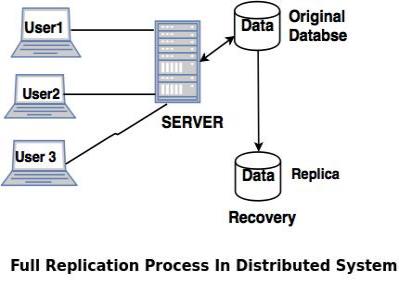


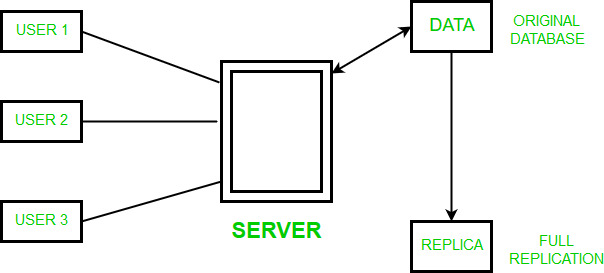
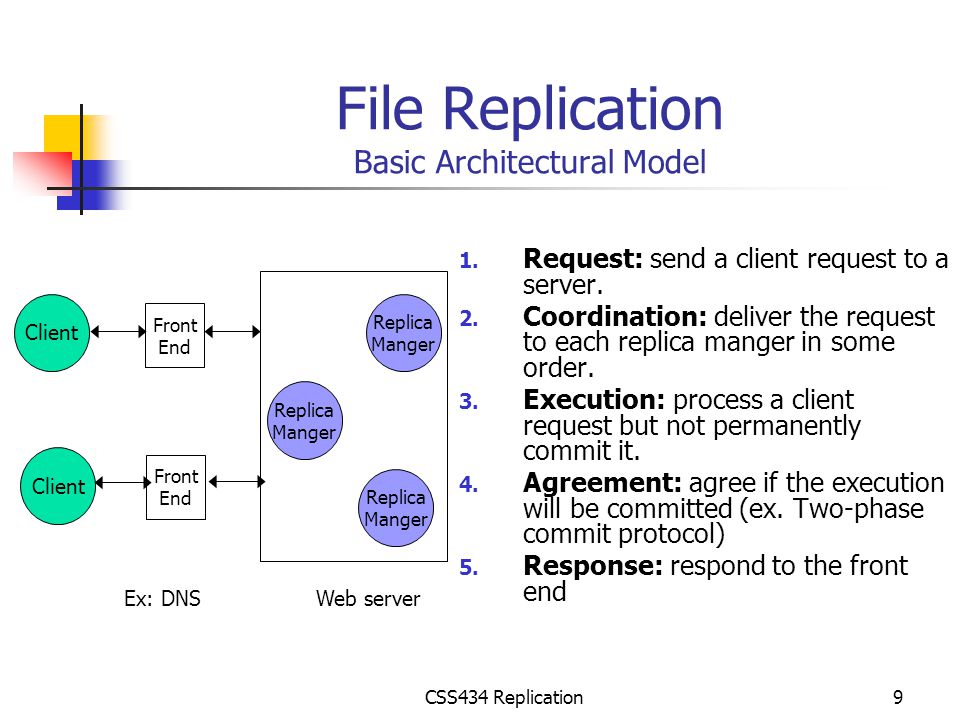
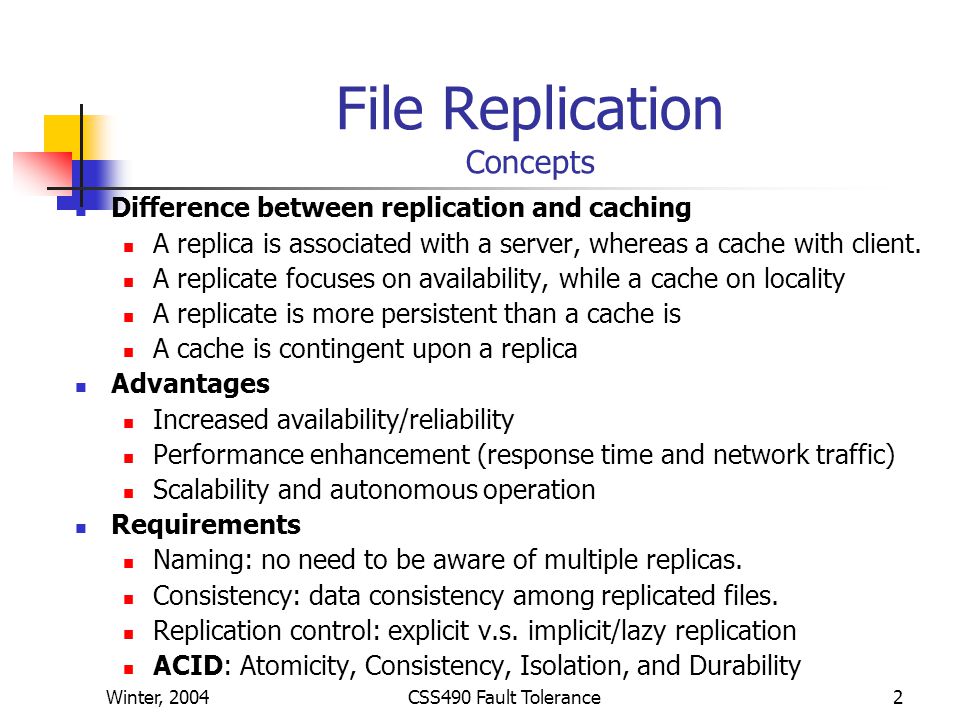

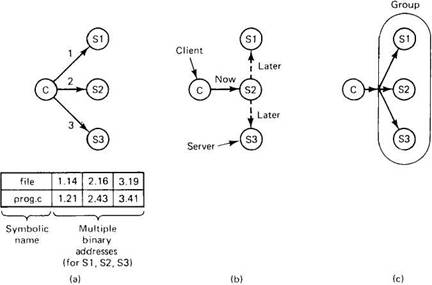
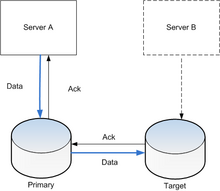
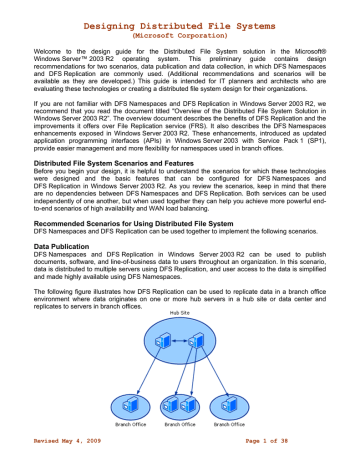


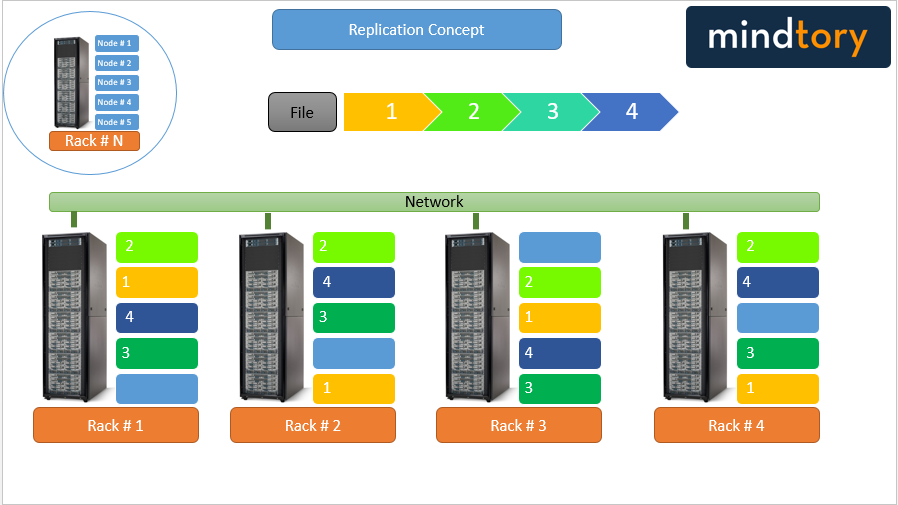







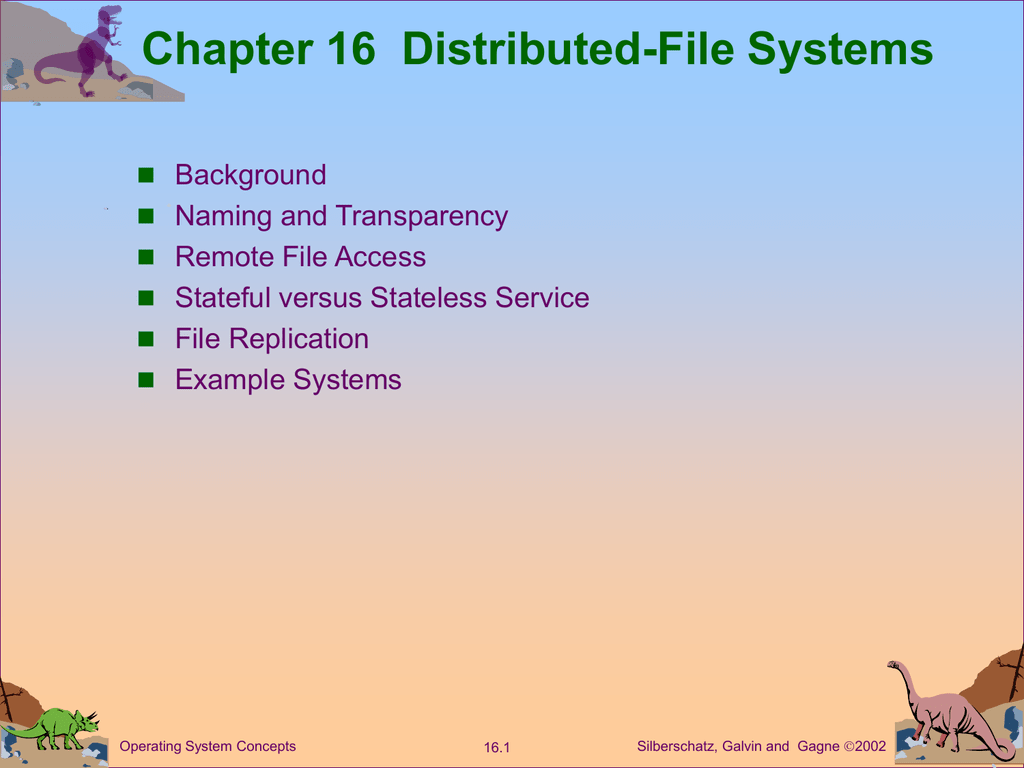
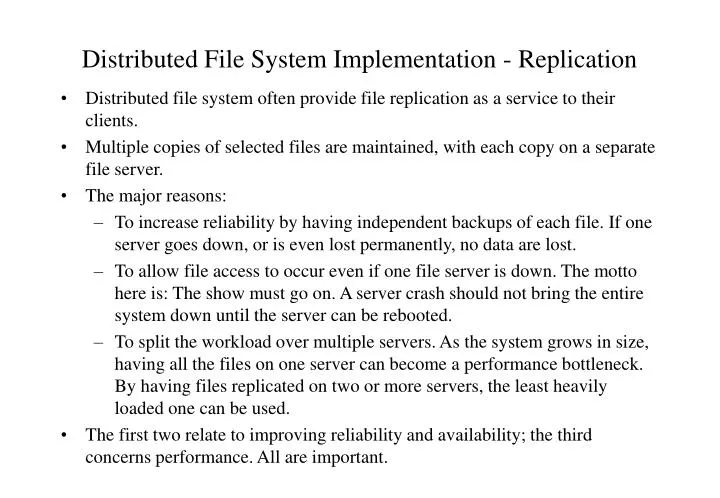

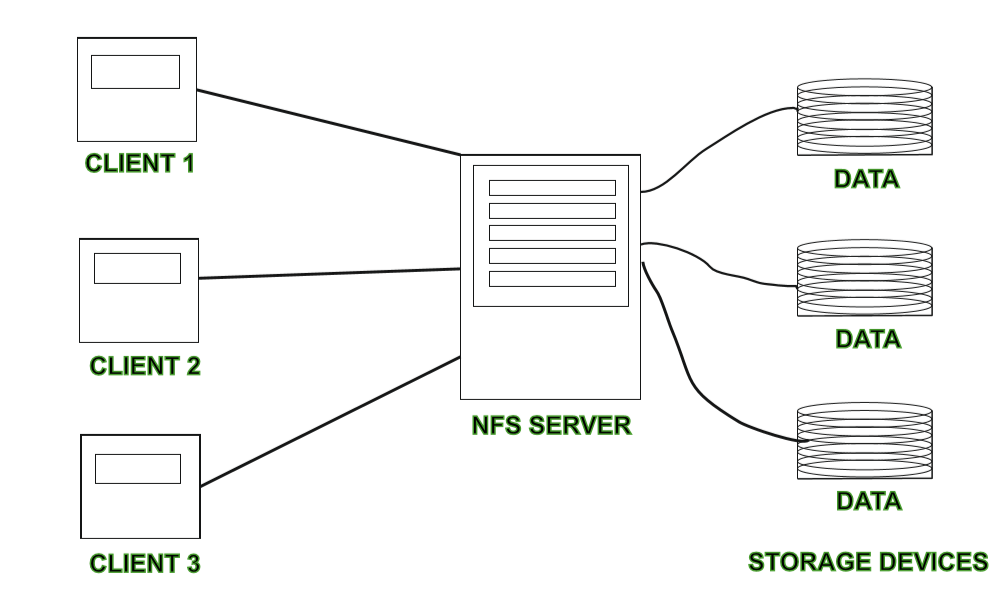




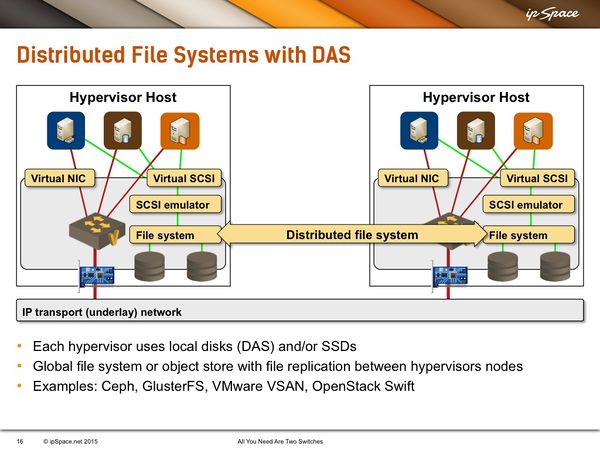


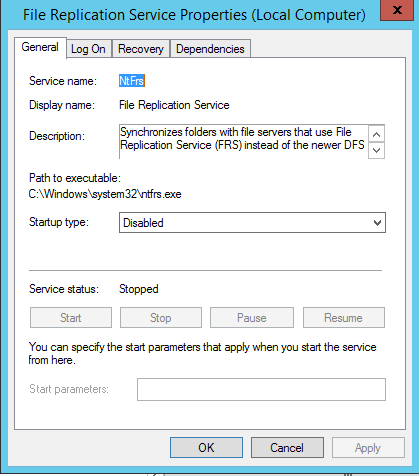
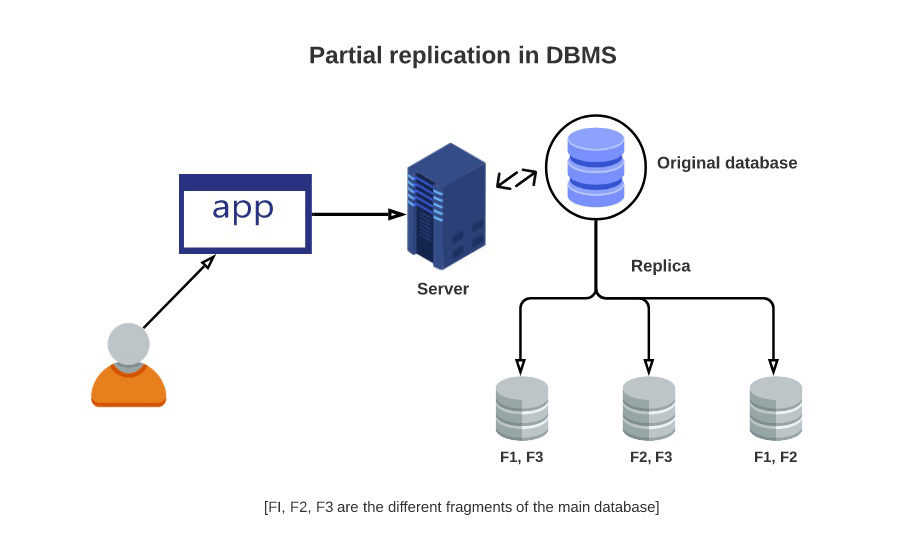



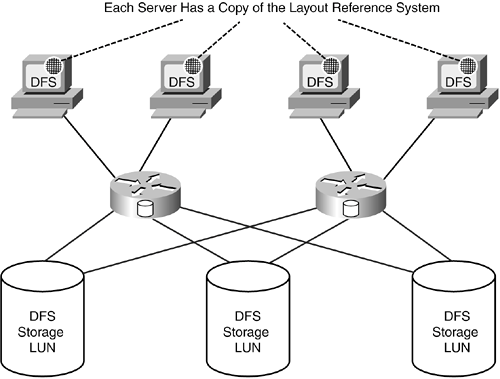

Post a Comment for "File Replication In Distributed System"